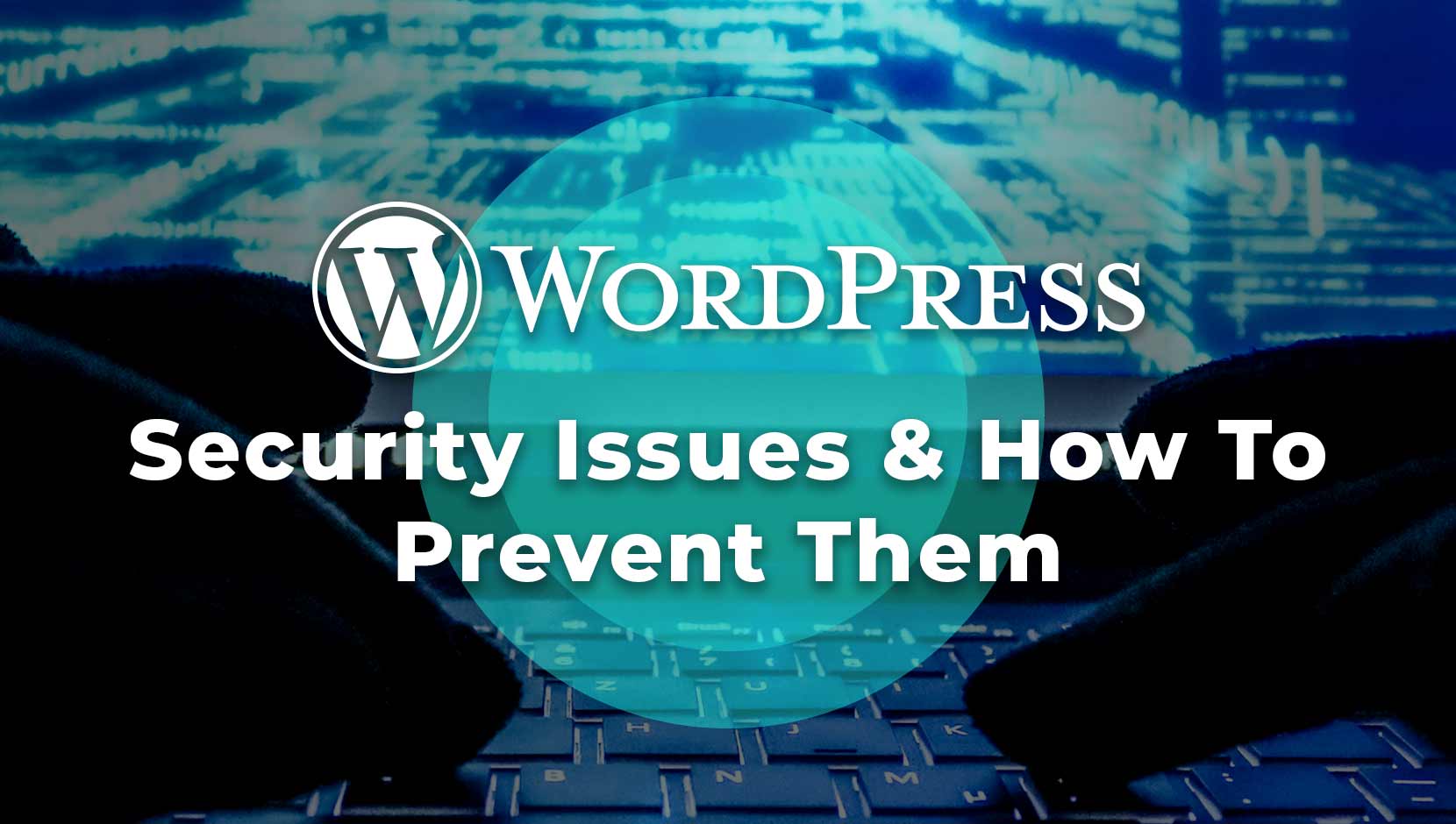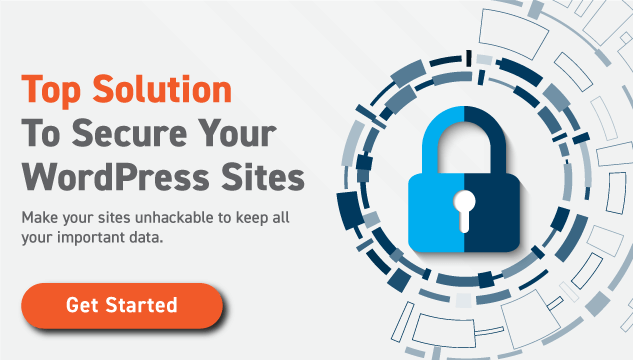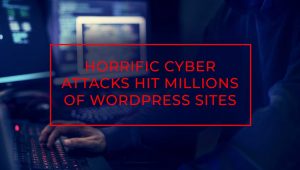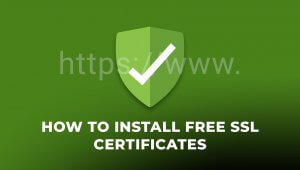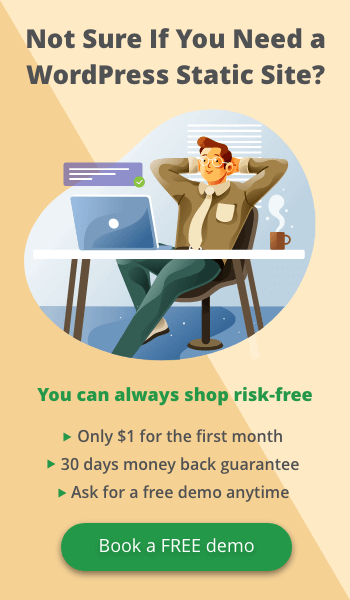According to the Hacked Website Report 2018, WordPress is the most used Content Management System, CMS, on the internet. It is also the most hacked. The report shows that 90 percent of all CMS-powered websites that were successfully hacked in Using a reliable web hosts, having a tough password and doing regular malware scans are a few ways to boost your WordPress security. Checkout these seven proven ways to protect your WordPress site.2018, were WordPress sites. This may seem like a deterrent to using WordPress, primarily because of looming WordPress security issues that you may not be aware of. However, it doesn’t have to be, because while it has security issues, there are ways to resolve or prevent those issues.
In this post, we will explore some of the most prevalent WordPress security issues, some causes and how to prevent them to ensure your website is protected.
Types of WordPress Security Issues
1. Website malware
The word malware is a combination of the words malicious and software. In simple terms, a Malware is any software that’s designed to steal data, damage devices or to have a negative impact on users.
Malwares aim is to find a weakness in a computer of website security system and exploit that.
If your WordPress site has been hacked, it means the files on your site has been injected with a malware such as a, Drive-by Download, Backdoor, Malicious Redirect or a Pharma Hack.
There are a host of other types of malware infections, such as Trojan, Virus & Spyware, but the four listed above are the most common ones that affect WordPress.
2. Brute force attacks
A brute force attack is when an attacker tries to gain access to people’s accounts by using a series of usernames and passwords. The hope is to eventually get the correct access information.
The easiest way to get access to your website is via your WordPress login page because by default, WordPress does not put a limit on the number of logins attempts that can be made.
Attackers know this and so they cause bots to attack your login page using the brute force attack method.
3. Denial-of-Service Attacks
Getting traffic to your website is usually the aim because traffic factors greatly in the success of your site. But there are times when too much traffic can be detrimental. Such is the case of a Denial-of-Service (DoS) attack.
The goal it to restrict you and users from accessing your site by overflooding it with traffic. The overflow of traffic in turn crashes the server and takes down all the websites hosted on that server.
4. SQL Injections
To function, your WordPress website uses what’s called a MYSQL, but it too can be infected. If an attacker accesses your WordPress database and all the data for your website, it’s said that an SQL Injection has occurred.
When this happens, the attacker can create a new admin-level user account and use it to gain full access to your WordPress site.
An SQL injection can also allow attackers to input new data, such as links to malicious or spam websites, into your database.
5. Cross-Site Scripting (XSS)
Cross-Site Scripting is what happens when a malicious code into the backend of a website by an attacker. This gives access to your frontend display, which allows hackers to attempt to harm visitors to your site.
An example of this is seen when attackers post a hidden link to a faulty website or show a counterfeit contact form to steal user information.
XSS attacks are similar to database injections, but while both involve the injection of codes in your files, Cross-Site Scripting’s main target is the functionality of your web page.
Factors That Compromise Your WordPress Site
There are a number of factors that can make your WordPress site vulnerable to security issues. These include, but are not limited to:
- Weak Passwords
- Failure To Update WordPress, Themes and Plugins
- Downloading/Using Plugins and Themes from Questionable Sources
Seven Ways To Prevent WordPress Security Issues
1. Set up your WordPress sites on FLATsite
Setting up a website on FLATsite is the ultimate way to protect WordPress sites. It gives limited users a private login portal that is protected by IP-blocking and tough firewall to thwart unauthorized access. Next, FLATsite lets you develop WordPress sites in a detached WP backend. This helps to keep your website’s code away from the live website that users see on the Internet. It’s also a plus for protecting sites from cyber-attacks.
Learn more about how FLATsite protects websites here.
2. Make sure you have strong passwords for all your accounts
A strong password is one that has more than 6 characters with a combination of letters, numbers and symbols.
It’s also advised that you use one password per account and that you change passwords every six months.
3. Install a WordPress security plugin
A security plugin like iThemes Security initiates the best WordPress security setting with just one click.
4. Activate WordPress two-factor authentication
This gives your WordPress login an extra layer of protection. It’s considered one of the best ways to significantly minimize a potential successful brute force attack.
5. Ensure your WordPress site is always updated
Updating your site is one of the best ways to avoid potential security issues. It bolsters your site against threats that were discovered after that last update.
6. Ensure permissions are accurately set up
Be sure to check that you set limited permission on all directories on your server. This will dictate who has the authority to create, edit and read files.
7. Do regularly scheduled malware scans
It’s important that you stay abreast of potential malware infections. This can be done by scheduling malware scans.
Having a reliable WordPress backup plan and activating WordPress Brute Force Protection are also things you can do to enhance your WordPress Security.

